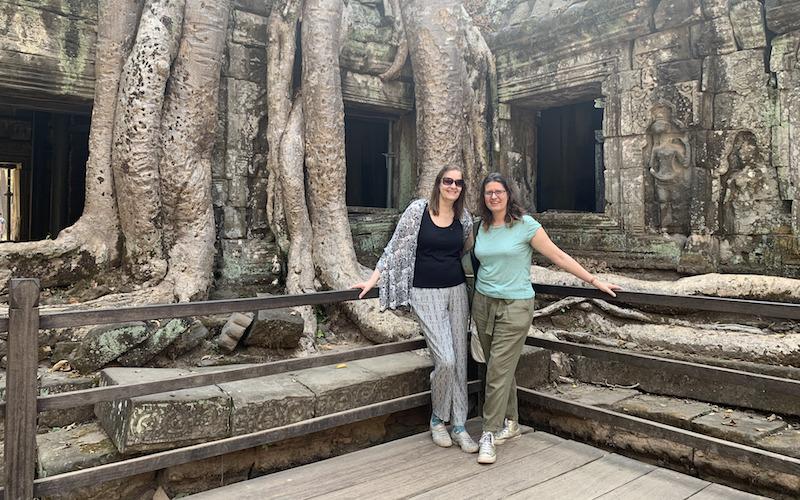Travelling round the Angkor Wat small circuit will be the highlight of your visit to Cambodia. Prioritise this along with the Angkor Wat grand circuit if you only have a few days in Siem Reap.
Tips on the Angkor Wat Small Circuit
If you like to take things slow and not be rushed, it is possible to split this into two days, doing the small Angkor Wat circuit in reverse starting with Ta Prohm and then the following day spend about 3 hours at Angkor Wat in the afternoon.
Angkor Wat Small Circuit in a Day
However, those with limited time will do the Angkor Wat small circuit in a day starting at Angkor Wat itself. A good option is to start with Angkor Wat early at sunrise, but prepare for it to be busy. Angkor Wat is one of the few temples that opens at 5am (along with Srah Srang, Phnom Bakheng and Pre Rup Temples).
Buying your Angkor Archaeological Park Ticket
Remember to get your ticket the day before if possible. You need to purchase your ticket at the main Angkor Wat ticket office to the South East of Angkor Wat. I opted to get a 7 day pass the day before my templeseeking started. The 7 days can be spread over a whole month and so you can take breaks in between. If you are looking for more advice on getting your ticket, check out my Angkor Wat ticket guide.
What to take for the Small Temple Circuit
It’s important to take water as it can get extremely hot, especially in the middle of the day. Wear something that covers your shoulders for respect. Long sleeved linen tops or T-Short with walking trousers are a good idea. Also, you will not be allowed into the main prangs of Angkor Wat without having your legs and shoulders covered, so this is important. Also, as much of the Angkor Archaeological Park is jungle, good comfortable walking boots are essential footwear.
Finding a Good Tuk-Tuk Driver
Find a good Tuk-tuk driver who speaks English and knows the temples well. I can recommend Serey (message me for his details!) Be sure to direct them to the exact temples that you want to see – especially if you want to include some of the minor ones that are often missed out such as Baphuon and Banteay Kdei.
I wouldn’t recommend trying to cycle the small circuit, even if you are an experienced cyclist. The park is extremely large with a great distance between temples. You will want to save time and preserve your energy for the temples. Some of them involve a lot of walking to the temples and/or up temple steps.
The Temples of Angkor Wat Small Circuit
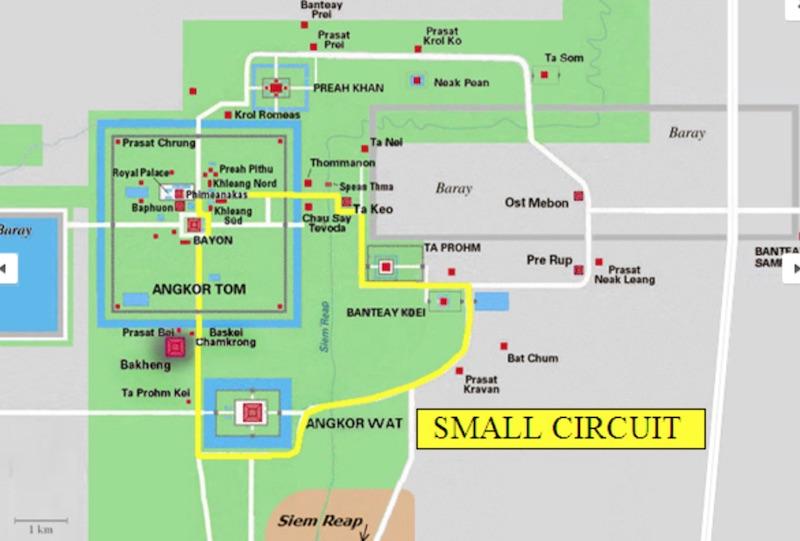
Depending on how many of these temples you see, and whether you do Angkor Wat on a separate day, the small circuit temple tour can take up to 7 hours. The temples of the Angkor Wat small circuit are…
- Angkor Wat
- Phnom Bakheng (usually skipped unless for a sunrise or sunset photo of Angkor Wat)
- Bayon
- Baphuon (inside Angkor Thom – often skipped)
- Phimeanakas (inside Angkor Thom – often skipped)
- Terrace of the Elephants and Terrace of the Leper King (often skipped but tell your Tuk-Tuk driver to stop here!
- Thommanon and Chau Say Tevoda (skippable but worth it if you have time)
- Ta Keo
- Ta Prohm
- Banteay Kdei (some drivers skip this so tell them to go if you want to see it)
- Srah Srang (Skippable but nice for sunset photos and the end of the day)
Angkor Wat
This spectacular temple is the largest religious monument in the world. I spent almost 3 hours there! I actually took my Mom for her 60th birthday and it was so memorable.
Cross the water to get to the outer gate, and be sure to capture photos of the entrance to Angkor Wat across the water before you enter.
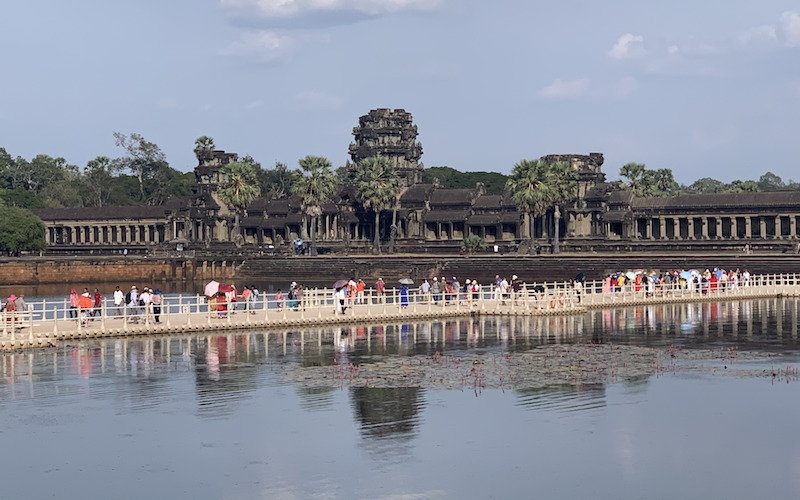
Angkor Wat was built in the first half of the 12th century by King Suryavarman II and took roughly 30 years to construct. The temple was intended to be his mausoleum and dedicated the Hindu God of Vishnu.
Angkor Wat is famous for having more than 3000 enticing heavenly nymphs carved into its walls. Each of them is exclusive, and there are 37 different hairstyles for up-and-coming stylists to check out! A lot of these exquisite nymphs were dented during efforts to try and clean the temples with chemicals during the 1980s, but they are currently being restored by the teams with the German Apsara Conservation Project.
It is likely that you will need to queue to get into the main prangs, but it is well worth it for the views. Remember that it is a sacred space and that you will be required to cover up in order to enter.
I visited Angkor Wat from 2pm to 5pm in the late afternoon. It was much cooler and quieter – a great time to visit.
One of the funniest things I heard was a lad from Bolton going ‘Oh look, two monks and a monkey!’ Remember that you are likely to see monks at Angkor Wat and you should be respectful of them (no loud noises, no photos of the monks without their permission and no touching them).
Phnom Bekheng
Phnom Bakheng (not to be confused with Bakong temple in the Roluos group) is usually a starting point for the sunrise tour because it gives wonderful views over Angkor Wat. It’s a 15 minute walk up to Phnom Bakheng and there is some construction going on up there, so this temple is often missed out unless you are there for the sunrise or sunset.
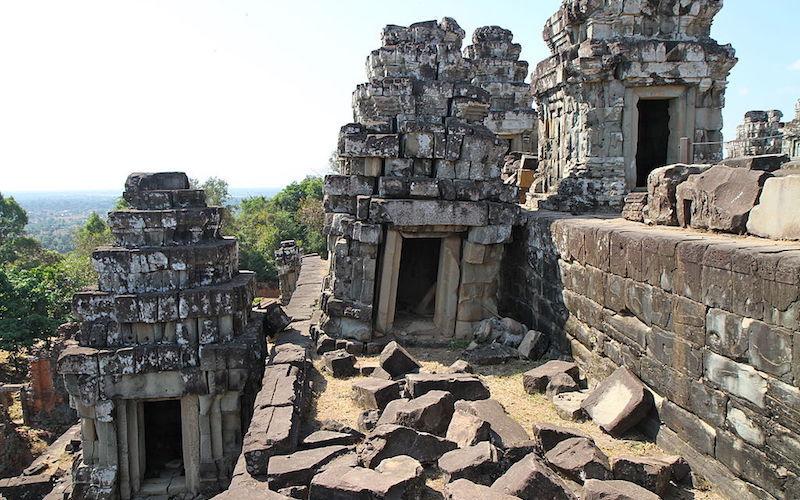
Bayon
Through the walls of the ancient city of Angkor Thom, you will first come to Bayon temple. Bayon is one of the most famous temples of Angkor Wat – it’s known as the temple of faces. There are 5 gates to this temples, all decorated with Bodhisattva Avalokiteshvara’s head as well as the sculpture of Churning of the milk ocean. Some historians disagree and argue that the faces are that of he former king, Jayavarman VII. Over 216 faces in total are carved into this late 12th Century temple. If you walk up to the top of the temple you can get close to the faces – they will be looking directly at you!
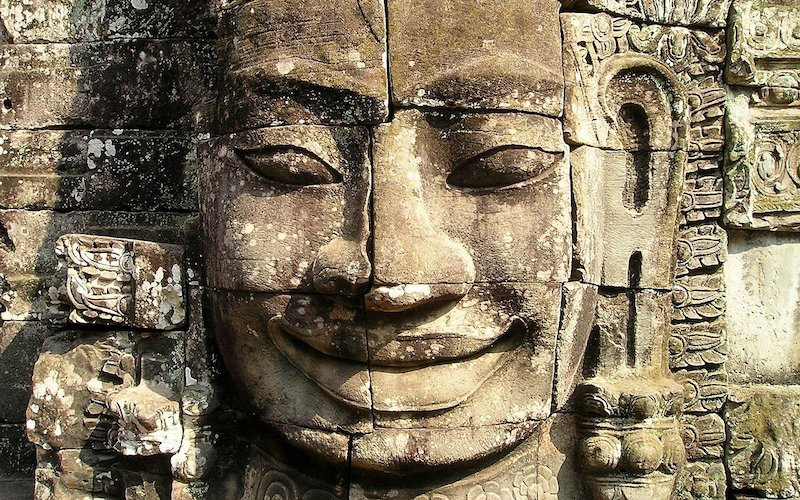
Unfortunately, the stairs to the temple were closed at my time of visiting (January 2020) due to reconstruction. Be sure to check on this in advance if you are interested in this particular temple.
Baphuon
Baphuon is the next temple on the small circuit route inside Angkor Thom. It is often skipped as it isn’t architecturally impressive or full of the Bayan trees growing around it like Ta Prohm and Banteay Kdei. However, it’s worth seeing if you have time. Make sure that you ask your Tuk-Tuk driver for this if you want to see it. There’s a steep set of stairs up to this mid-11th century temple.
Baphuon is a three-tiered temple mountain built as the state temple of Udayadityavarman II dedicated to the Hindu God Shiva (death and destruction).
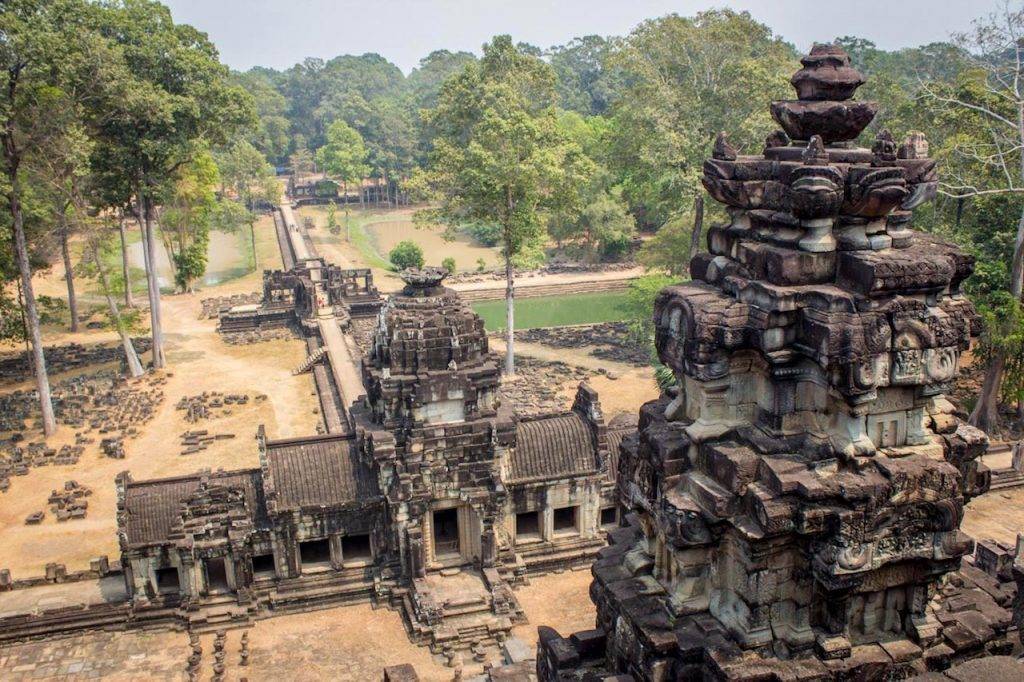
Phimeanakas
Also within Angkor Thom (the walled ancient city) is Phimeanakas. Follow the ‘way of visit’ signs and you will come to a three-tiered pyramid style Hindu temple, built at the end of the 10th century. It was built during the reign of Rajendravarman and then completed by Suryavarman I. Again, it is often missed off the Angkor Wat small circuit and so let your driver know if you want to see this.
It is possible for your driver to wait for you on the Angkor Thom car park while you visit Baphuon, Phimeanakas and the Terrace of the Elephants and Terrace of the Leper King (below) altogether. You would be surprised at how many people rush through the circuit missing these delights.
Terrace of the Elephants and Terrace of the Leper King
Terrace of the Elephants and Terrace of the Leper King are often skipped but tell your Tuk-Tuk driver to stop here! These two terraces were one of my favourite parts of the small loop tour – high up there with Angkor Wat and Ta Prohm!
The terrace of the Elephants was used by King Jayavarman VII as a platform from to view his victorious returning army from. The way that the elephant heads are crafted into stone with their trunks linking to the ground is beautiful.
Follow the terrace down to the next terrace along and follow the arrows for the the ‘way of visit’ to see the phenomenal carvings of the 12th Century terrace. It’s name comes from the Leper King statue on the terrace which is now a replacement for the original. There is much debate about who this actually was – the theory that Jayavarman VII doesn’t seem to have much historical evidence. Another idea is based on an inscription that appears on the statue in characters of the 14th or 15th century which can be translated as the assessor of Yama – God of death or of judgment. Another theory suggests that the Leper King statue got its name because of the lichen which grows on it! Which is true? Who knows. It’s yet another one of the mysteries of Angkor Wat.
Be sure to watch this video to see the bas-relief carvings inside the terrace of the Leper King….
Thommanon and Chau Say Tevoda
When you come out of the East gate of Angkor Thom (Victory Gate) you will see these two temples on opposite sides of the road – Tommanon and Chau Say Tevoda. They are skippable but worth it if you have time as they are less visited and more peaceful as a result.
This pair of Hindu temples was built during the reign of Suryavarman II (1113–1150). Tommanon is slightly better preserved than Chau Say Tevoda but both are lovely to see with some well preserved Devetas (female deities).
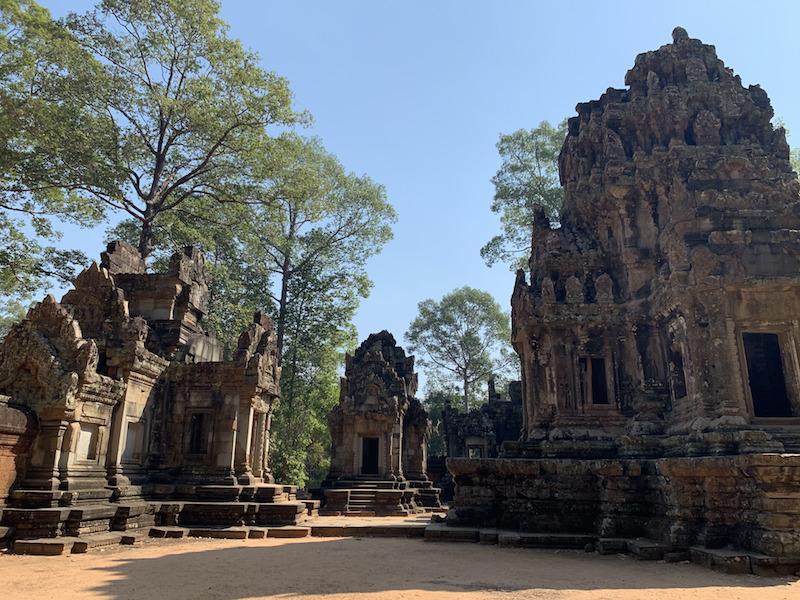
Ta Keo
New on the Angkor Wat small loop is Ta Keo – an interesting pyramid style built entirely out of sandstone in 975AD. Be prepared to walk up a lot of steps to get to the top! It’s built in a similar style to Pre Rup on the Angkor Wat Grand Circuit.
Ta Prohm
Ta Prohm is one of my absolute favourite temples of Angkor Archaeological park. There is something so special about the way that the Bayan tree roots wrap around the recently supported temple. Ta Prohm is a late 12th Century temple that was originally called Rajavihara. It was made famous by the Tomb Raider movie and has undergone extensive renovation to accommodate the large number of tourists who flock t see it. Ta Prohm is the second most popular temple on the Angkor Wa small circuit after Angkor Wat itself.
Banteay Kdei
Similar to Ta Prohm, Banteay Kdei has four Gaporas (monumental gates). The temple was built in Bayan style and so you may see similarities between this and Bayan (within Angkor Thom) – look for the faces in the towers. There is a large platform built to access the main temple, which is protected by lions and other guardian statues.
This is one of those temples where you can walk in one side and have your tuk-tuk pick you up at the other, a bit like Ta Prohm.
Some drivers skip Banteay Kdei so tell them to go if you want to see it – I can’t understand why anyone would to miss this one! It’s got a Tomb Raider feel and lots of fabulous internet corridors to explore along with the bats hanging asleep above the empty pedestals.
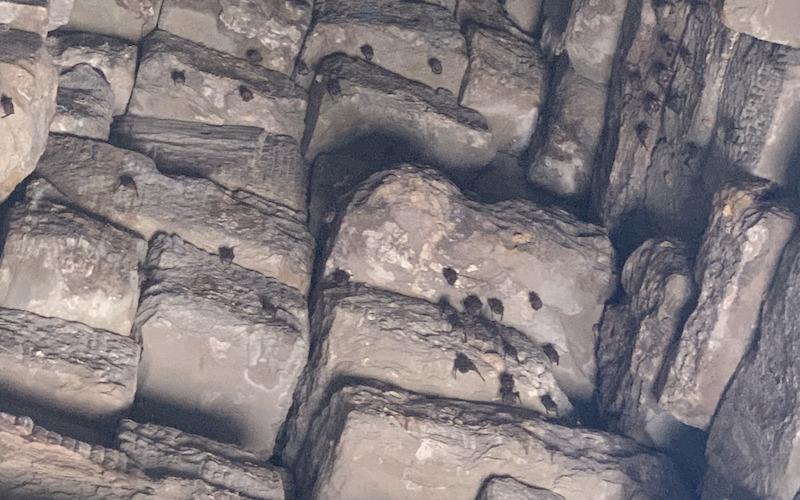
Known as the ‘Citadel of Monks’ or ‘Citadel of Chambers’ this temple was built in the late 12th to early 13th Century during the reign of Jayavarman VII. It’s a Buddhist temple that was actually inhabited until around 1960. Due to the later date of it’s construction, unlike Angkor Wat, Banteay Kdei was never a Hindu temple – it was always Buddhist.
Come and take a tour of Banteay Kdei with me on YouTube.
Srah Srang
Srah Srang is the platform or viewing point leading to the Baray (reservoir). It’s skippable but nice for sunset photos and the end of the day. Why not end your day here sipping a coffee and watching the sun go down over the water. The perfect end to the perfect day!
Further Reading on Angkor Wat
I’ve spent 7 full days exploring the temples of Angkor Wat and I’ve written extensively about them. If you would like to read further, check out these articles…
- The Best Temples of Angkor Wat
- Banteay Samre – A worthwhile off the beaten track temple
- Angkor Wat Sunrise – A photo essay
What to Pack for Cambodia
Take light cotton tops, long comfortable trousers and maxi dresses that cover your shoulders. Thailand is a conservative Buddhist county and you are likely to be refused entry to top sites like the Phnom Penh Royal Palace and Angkor Wat with shoulders showing and shorts or short skirts. You can pack shorts and vest tops for hanging around your hotel or the pool.
Pack a water bottle because many guest houses are eco friendly and have a refill and reuse policy to cut down on plastic waste. The drinking water is fine and many hotels supply cold purified drinking water.
Bugs bite particularly in the evenings in Cambodia and so a bug repellant is essential. Also the sun can get hot – this Christmas and New Year temperatures were exceeding 32 degrees and so sun screen is another essential.

